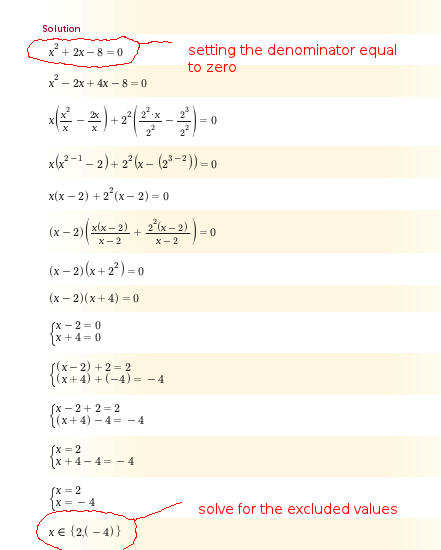The problem
I need help with finding the excluded values for this algebraic fraction?
Answer provided by our tutors
I see a fraction and the denominator can be isolated to an equation equal to zero. This approach allows illegal values to be quickly solved for (i.e. no denominator should be equal to zero).
The domain of a function can be found by solving portions of the function to find "legal values". For example, if the expression contains a radical, then you want to solve for values inside the radical that are greater than or equal to zero (since negative numbers are not allowed inside radicals).
The other thing to look for are denominators of fractions, checking for values that make the denominator not equal to zero. As an example, consider the expression "(x+3)/(x-3)". Isolating the denominator and setting it equal to zero, shows that x=3 can not be a part of the domain since "x-3=0" solves to "x=3"... so if x=3, then the denominator is equal to zero and that is not legal. The domain would then be expressed as (-inf, 3) U (3, inf).

